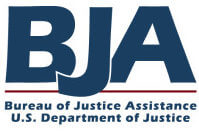The Capital Case Litigation Initiative is a Bureau of Justice Assistance (BJA) national training and technical assistance program that provides support to prosecutors nationwide on implementing improvements throughout the field of capital case litigation. APA focuses on four main implementation goals: first, to develop and apply model standards of practice and qualifications for state and local prosecutors; second, working to develop resources that minimize the potential for error in capital trials; third, providing TTA that specifically focuses on improved ethics standards, as well as each phase of a capital trial; and finally, utilizing training sessions, including onsite mentoring or technical assistance, cross-site or train-the-trainer, peer-to-peer, telephone, and web-based trainings, as well as a capital litigation list serv for prosecutors. The types of programming provided in this project include:
- Regional trainings
- Onsite pilot programs
- Virtual training and webinars
- To gain access to our webinar database, please register here.
- Current resources on capital litigation improvement
- Fact sheets
- Handouts
- Circuit comparisons
- Death penalty/capital case resources

